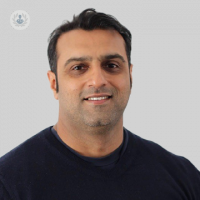What causes back pain?
Written in association with:Back pain is a common condition that affects millions of people worldwide, ranging from mild discomfort to debilitating pain that interferes with daily activities. It can originate in various parts of the back, including the lower, middle, or upper regions, and is often caused by a combination of lifestyle factors, injuries, or underlying health conditions. While most back pain is temporary, chronic back pain can significantly impact quality of life if not managed properly.

Causes
The causes of back pain are diverse. Poor posture, particularly from prolonged sitting or standing, is a leading contributor. Muscle or ligament strain caused by heavy lifting, sudden movements, or repetitive tasks is another common cause.
More serious conditions such as herniated discs, arthritis, or spinal stenosis—where the spinal canal narrows and compresses nerves—can also result in back pain. In some cases, lifestyle factors like obesity, lack of exercise, and smoking weaken the spine and increase the risk of pain. Stress and anxiety, which often lead to muscle tension, may exacerbate the problem.
Prevention
Preventing back pain begins with maintaining a healthy lifestyle. Regular exercise, especially activities that strengthen the core and improve flexibility, helps support the spine and reduce the risk of injury.
Practicing good posture, both while sitting and standing, is crucial to minimise unnecessary strain on the back. Ergonomic furniture and proper lifting techniques can also play a significant role in prevention. For those prone to back pain, incorporating relaxation techniques like yoga or mindfulness may help alleviate tension.
Treatment
Treatment for back pain varies depending on the severity and cause. Mild back pain often improves with rest, heat or ice application, and over-the-counter pain relievers. Physical therapy is a highly effective option, focusing on exercises that strengthen the back and improve mobility. For more persistent or severe cases, interventions like corticosteroid injections or surgery may be necessary to address structural issues.
It’s important to seek medical advice if pain persists for more than a few weeks or is accompanied by symptoms like numbness, weakness, or loss of bladder control. Understanding the causes, prevention, and treatment of back pain empowers individuals to manage the condition effectively and maintain an active, pain-free life.


